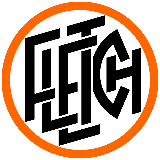Probe Interface Board Design (resistance switching)
- fletch
-
 Topic Author
Topic Author
- Offline
- Premium Member
-

Less
More
- Posts: 139
- Thank you received: 70
04 Feb 2024 16:28 #292413
by fletch
Replied by fletch on topic Probe Interface Board Design (resistance switching)
Well, someone had to try it out on a real CNC... Up until now I've been using a bench fixture & wedge to control the contacts & opening speed for the probe interface board.
www.youtube.com/shorts/06nPOA94Pbk
I am pleasantly surprised by its competence - I repeated the probe 4 time and was within 0.002mm each time. Yes, that's way beyond the limitations of my machine and yes, the plastic will likely move with temperature and humidity changes but hey, it's a Mostly 3D Printed Probe!
www.youtube.com/shorts/06nPOA94Pbk
I am pleasantly surprised by its competence - I repeated the probe 4 time and was within 0.002mm each time. Yes, that's way beyond the limitations of my machine and yes, the plastic will likely move with temperature and humidity changes but hey, it's a Mostly 3D Printed Probe!
The following user(s) said Thank You: tommylight
Please Log in or Create an account to join the conversation.
- tommylight
-

- Offline
- Moderator
-

Less
More
- Posts: 21053
- Thank you received: 7181
04 Feb 2024 19:41 #292429
by tommylight
Replied by tommylight on topic Probe Interface Board Design (resistance switching)
That is impressive, for sure.
I have to remind myself to build one ... or 12 !
Right after i finish my mill ... started gathering parts several years back...
I have to remind myself to build one ... or 12 !
Right after i finish my mill ... started gathering parts several years back...
The following user(s) said Thank You: fletch
Please Log in or Create an account to join the conversation.
- fletch
-
 Topic Author
Topic Author
- Offline
- Premium Member
-

Less
More
- Posts: 139
- Thank you received: 70
05 Feb 2024 12:36 #292503
by fletch
Oh go on, you know you want to! It can sit on your desk/bookshelf and inspire you to crack on with the mill build Especially if there's 12 of them all lined up.
Especially if there's 12 of them all lined up.
I've even done a printing guide and started an assembly guide for you: github.com/Stutchbury/MostlyPrintedProbe...ain/docs/PRINTING.md
Replied by fletch on topic Probe Interface Board Design (resistance switching)
That is impressive, for sure.
I have to remind myself to build one ... or 12 !
Right after i finish my mill ... started gathering parts several years back...
Oh go on, you know you want to! It can sit on your desk/bookshelf and inspire you to crack on with the mill build
I've even done a printing guide and started an assembly guide for you: github.com/Stutchbury/MostlyPrintedProbe...ain/docs/PRINTING.md
The following user(s) said Thank You: tommylight, Clive S
Please Log in or Create an account to join the conversation.
- tommylight
-

- Offline
- Moderator
-

Less
More
- Posts: 21053
- Thank you received: 7181
05 Feb 2024 13:05 #292507
by tommylight
Replied by tommylight on topic Probe Interface Board Design (resistance switching)
Might as well, the printers are not doing anything since they finished some propellers a while back.
Will print with HIPS filament, it is better at layer bonding than ABS.
Thank you for the guide, i will try to figure it out without it, as i usually do, i can assemble Voron 2.4 without ever looking at the guide, that thing has over 600 screws!
Will print with HIPS filament, it is better at layer bonding than ABS.
Thank you for the guide, i will try to figure it out without it, as i usually do, i can assemble Voron 2.4 without ever looking at the guide, that thing has over 600 screws!
The following user(s) said Thank You: fletch
Please Log in or Create an account to join the conversation.
- fletch
-
 Topic Author
Topic Author
- Offline
- Premium Member
-

Less
More
- Posts: 139
- Thank you received: 70
05 Feb 2024 14:23 - 05 Feb 2024 14:24 #292517
by fletch
Replied by fletch on topic Probe Interface Board Design (resistance switching)
Isn't HIPS a stiff flexible? Not that there is ever going to be much pressure on the thing - temperature/humidity stability is probably a higher priority.
I don't think it will be much of a stretch if you can build a Voron blindfolded.
If I can get my head around single point threading, I might try making the body, top & spider on the lathe - which is what I thought I was going to do before I realised how well the 3D printed one worked!
I don't think it will be much of a stretch if you can build a Voron blindfolded.
If I can get my head around single point threading, I might try making the body, top & spider on the lathe - which is what I thought I was going to do before I realised how well the 3D printed one worked!
Last edit: 05 Feb 2024 14:24 by fletch.
The following user(s) said Thank You: tommylight
Please Log in or Create an account to join the conversation.
- yrsiddhapura
- Offline
- Premium Member
-

Less
More
- Posts: 133
- Thank you received: 5
07 Feb 2024 11:01 #292725
by yrsiddhapura
Replied by yrsiddhapura on topic Probe Interface Board Design (resistance switching)
Hi it's looking much promissing results I wold really like to try interface board with mine electronic damaged OMP60
Please Log in or Create an account to join the conversation.
- fletch
-
 Topic Author
Topic Author
- Offline
- Premium Member
-

Less
More
- Posts: 139
- Thank you received: 70
08 Feb 2024 20:07 - 08 Feb 2024 20:08 #292876
by fletch
Replied by fletch on topic Probe Interface Board Design (resistance switching)
Hi Yagnesh - That's a nice probe - is the OMP60 a mechanical device? If so, you would have to somehow wire into the physical contacts - would be interesting to see the innards 
Edit: If not, you could always make a Mostly Printed Probe...
Edit: If not, you could always make a Mostly Printed Probe...
Last edit: 08 Feb 2024 20:08 by fletch.
Please Log in or Create an account to join the conversation.
- DEVILHUNTER
- Offline
- Junior Member
-

Less
More
- Posts: 30
- Thank you received: 10
12 Feb 2024 14:18 #293150
by DEVILHUNTER
Replied by DEVILHUNTER on topic Probe Interface Board Design (resistance switching)
I follow this topic with great interest. Allways wanted to use a 3D probe in my machine but knowing about the 3 lobule error has stopped me for many years.
I do have a DIY kinematic 3D probe, with similar size as the OMP-40. It was designed to be used on TTS tooling. The problem is that my spindle does not have orientation, so is impossible to perform any calibration that could compensate that error. The probe was designed to be used on an ATC, so I could not wire anything into it. The idea was to send a 1 or 0 signal with some IR LEDs (also visible ones), but they were not working. I have in mind try to detect the visible LED with a BPW24R photodiode.
At my work they were going to scrap a couple of old school Renishaw probes, MP10 and MP12. They gave it to me instead although they are too big for my machine. I did not have any receptor, but programmed one (on a very basic way with arduino and never tested) thanks to this very explicative video:
Another interesting thing to test is the repeteability of closing the circuit, not just opening it. On my mill I use a cheap touch probe mostly to compensate ballscrew heating. At first I had very bad results with it, did a few mods to improve the soft contacts, but in the end found that the probing direction was key. I have way too much preload on the Z rails and ballscrew, making the downward movement a bit funky, while upwards is way smoother. I know is not the same cause, but measuring my tools up instead of down has improved the repetability form a few hundreds of mm to a few microns.
Other ideas I have though to avoid the lobe error wihtout calibration is to close the circuit with the part itself, using a conductive stylus. I used this a lot with my old toy mill (Proxxon MF70) that I isolated the headstock from the table. Of course this only works with conductive workpieces, and to be fair it lead me to a few broken endmills (operator mistakes). With the kinematics of the probe is easy to avoid the broken tools. Isolation could be on the probe or with the ceramic spindle bearings. Water based coolant is a problem too.
A good friend on mine is a technician on Blum. He allways praises how good their probes are and how they don't have the lobe error with their laser system. I have never seen the guts of those though.
I do have a DIY kinematic 3D probe, with similar size as the OMP-40. It was designed to be used on TTS tooling. The problem is that my spindle does not have orientation, so is impossible to perform any calibration that could compensate that error. The probe was designed to be used on an ATC, so I could not wire anything into it. The idea was to send a 1 or 0 signal with some IR LEDs (also visible ones), but they were not working. I have in mind try to detect the visible LED with a BPW24R photodiode.
At my work they were going to scrap a couple of old school Renishaw probes, MP10 and MP12. They gave it to me instead although they are too big for my machine. I did not have any receptor, but programmed one (on a very basic way with arduino and never tested) thanks to this very explicative video:
Another interesting thing to test is the repeteability of closing the circuit, not just opening it. On my mill I use a cheap touch probe mostly to compensate ballscrew heating. At first I had very bad results with it, did a few mods to improve the soft contacts, but in the end found that the probing direction was key. I have way too much preload on the Z rails and ballscrew, making the downward movement a bit funky, while upwards is way smoother. I know is not the same cause, but measuring my tools up instead of down has improved the repetability form a few hundreds of mm to a few microns.
Other ideas I have though to avoid the lobe error wihtout calibration is to close the circuit with the part itself, using a conductive stylus. I used this a lot with my old toy mill (Proxxon MF70) that I isolated the headstock from the table. Of course this only works with conductive workpieces, and to be fair it lead me to a few broken endmills (operator mistakes). With the kinematics of the probe is easy to avoid the broken tools. Isolation could be on the probe or with the ceramic spindle bearings. Water based coolant is a problem too.
A good friend on mine is a technician on Blum. He allways praises how good their probes are and how they don't have the lobe error with their laser system. I have never seen the guts of those though.
Please Log in or Create an account to join the conversation.
- yrsiddhapura
- Offline
- Premium Member
-

Less
More
- Posts: 133
- Thank you received: 5
14 Feb 2024 05:26 #293296
by yrsiddhapura
Replied by yrsiddhapura on topic Probe Interface Board Design (resistance switching)
Sorry for late reply i actually mate a small accident at shop...
Yes its mechanical probe that use same principle Ball and Leg type and ya it is possible to wire physical contact.
i have put it somewhere once i find out will post picture of it.
Yes its mechanical probe that use same principle Ball and Leg type and ya it is possible to wire physical contact.
i have put it somewhere once i find out will post picture of it.
The following user(s) said Thank You: fletch
Please Log in or Create an account to join the conversation.
- fletch
-
 Topic Author
Topic Author
- Offline
- Premium Member
-

Less
More
- Posts: 139
- Thank you received: 70
27 Feb 2024 18:26 - 27 Feb 2024 18:28 #294621
by fletch
Replied by fletch on topic Probe Interface Board Design (resistance switching)
Attachments:
Last edit: 27 Feb 2024 18:28 by fletch. Reason: routeS - there's bound to be more than one.
The following user(s) said Thank You: yrsiddhapura
Please Log in or Create an account to join the conversation.
Moderators: PCW, jmelson
Time to create page: 0.101 seconds

